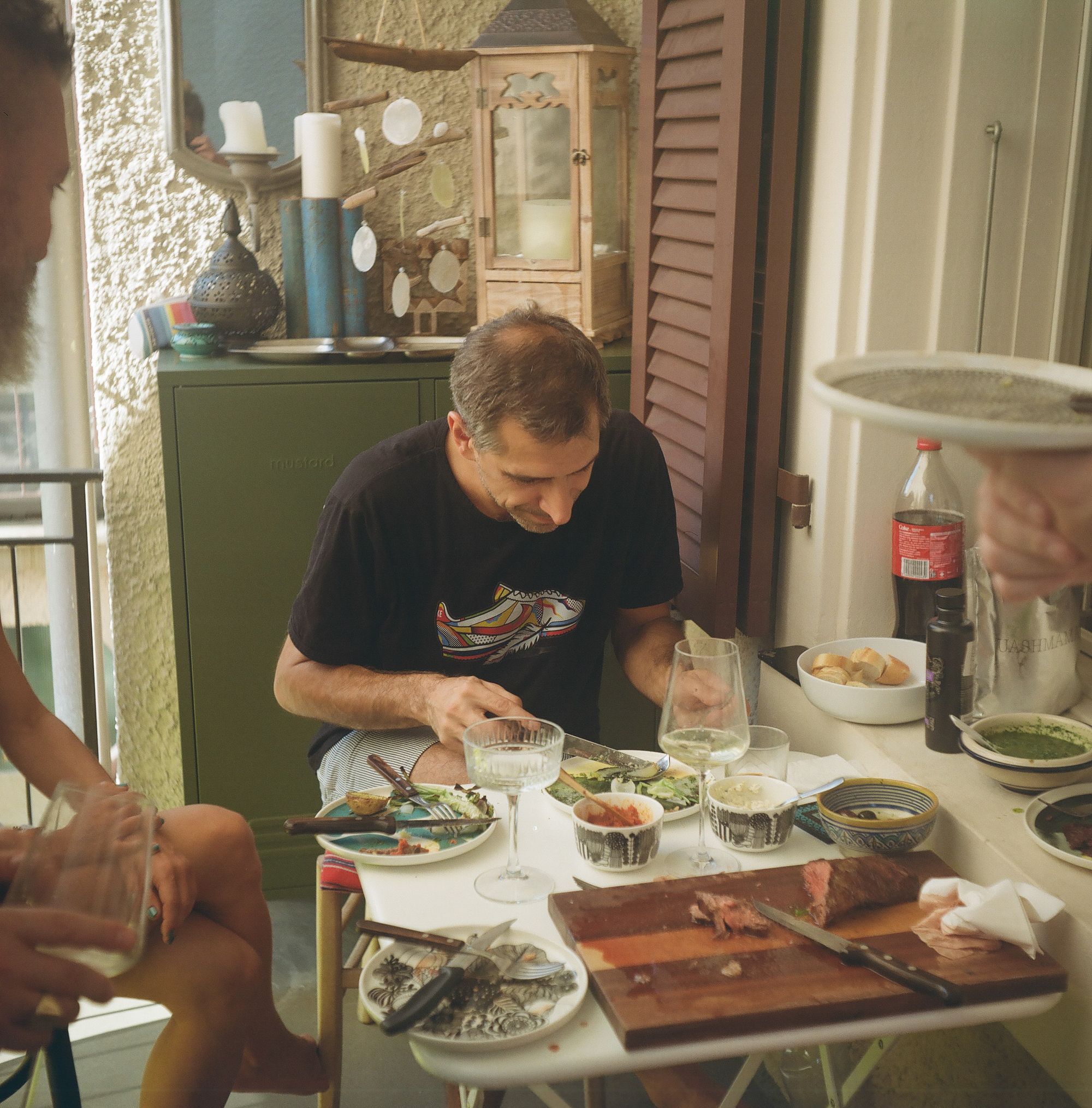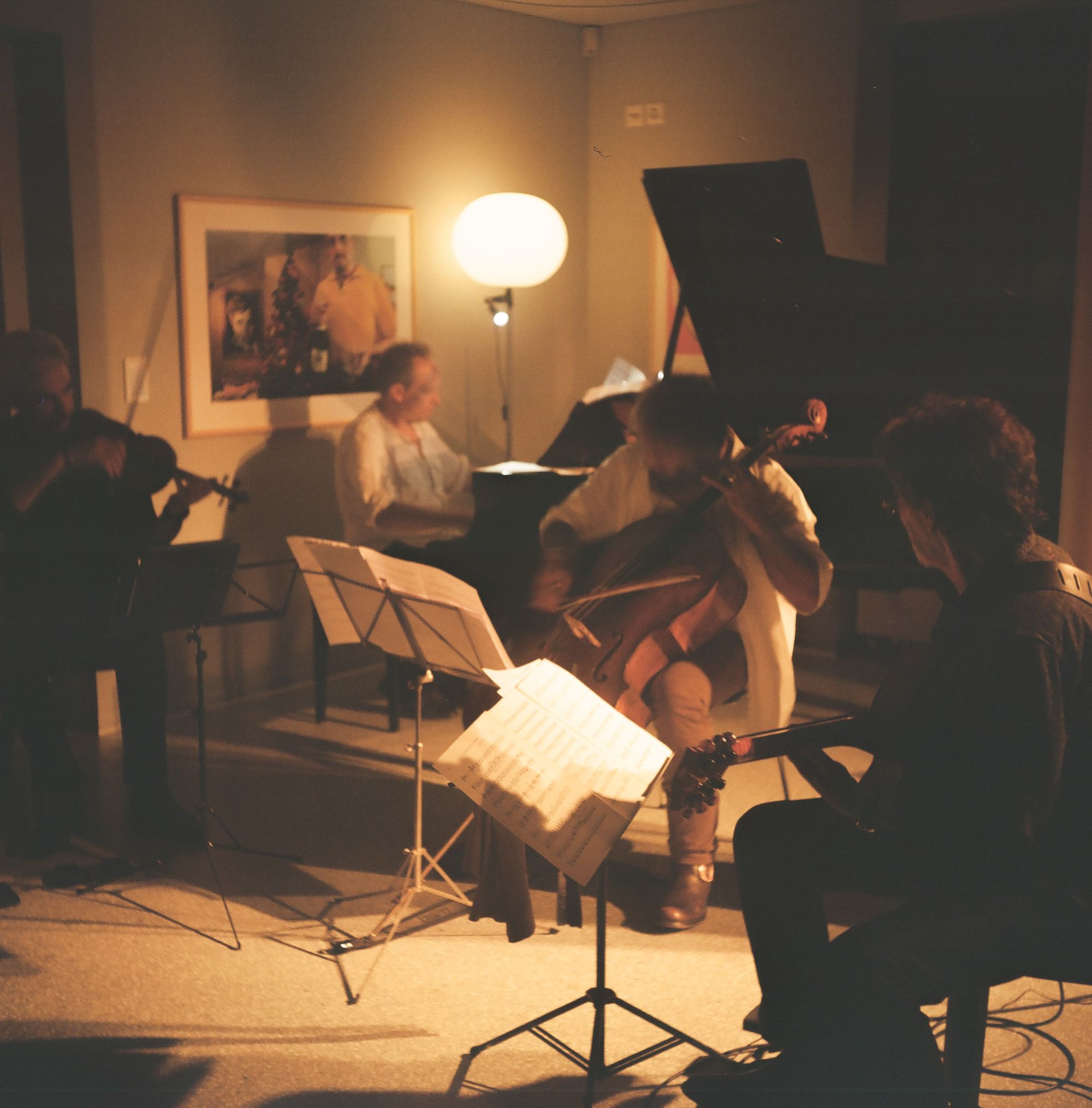What to eat ARGENTINA 🇦🇷 Asado and chimichurri
Argentina’s national dish asado is both a dish and an experience that stems from the fact that there are more cattle than people. Asado is quite simply grilled meat, but done slow, on an open fire... It is not a bang nor a whimper, but a slow symphony of salt, beef and flavor.

Asado and chimichurri
Published November 17, 2023 · by Amanda Rivkin
Argentina’s national dish asado is both a dish and an experience that stems from the fact that there are more cattle than people. Asado is quite simply grilled meat, but done slow, on an open fire. It is more ritualistic than simply grilling some steaks on the barbecue. The cuts are larger and thicker and the process is slowed down for maximization of flavors of beef. It is not a bang nor a whimper, but a slow symphony of salt, beef and flavor.
Asado is also the name given to a popular occasion for a gathering year-round. It begins when an asador lights the fire. The grill itself is known as a parilla. Unlike grills as many in the West understand it, the asado fire is slow burning wood and charcoal with the meat cooked beside it rather than over it for a slow burning effect.
The word asado refers to both the meat and the meal.
While guests wait for the meat to finish, there is a hearty picado, or tapas, on offer which includes an array of charcuterie, cheese, olives and salads. Yerba maté and fernet with or without Coca Cola are traditional accompanying thirst quenchers.

The meat itself is seasoned only with salt. Vacio is Argentine Spanish for flank steak. It is cooked alongside chorizo, a pork-sausage less spicy than variations found in Spain, and morcilla, a pudding like blood sausage with rice.
The origin of the tradition of asado dates back to nineteenth century gaucho culture. Gauchos are legendary figures, akin to North American cowboys, who roamed la Pampa. They were in many ways self-sufficient survivalists, living off the land and available materials, largely due to poverty. They developed a taste for beef because of its abundance.
Gauchos are known to prefer wood from the quebracho tree for the asado due to its tendency to burn slowly. Traditional asado meats are accompanied by chimichurri sauce, made from various herbs, garlic, and chilis, and criollo sauce, made from onion, tomato and vinegar. Often simple salads are prepared by the women or made in advance while the men tend to the fire.
Argentines consume an average of 56 kilos of beef each year. The origins of such consumption patterns can be traced to 16th century colonialism when the conquistadores brought cows from the northern part of Latin America further south. When left to pasture in the midst of thousands of hectares of open land, the cattle were fruitful and multiplied.
Historically, the first Swiss nationals emigrated to what later became Argentina in the mid-17th century. By 1876, the Swiss consulate had to be upgraded to a consulate general due to the large number of Swiss nationals in the country. Prior to the Second World War, approximately 44,000 Swiss arrived in the country and “thousands of Argentine nationals have roots in Switzerland,” according to the Swiss Federal Department of Foreign Affairs.
Argentina is currently home to the largest Swiss expatriate community in Latin America, with just over 15,000 Swiss nationals officially registered there at the end of 2022. According to Swiss government-run Swiss Info, 95% of Swiss nationals in Argentina are dual nationals of both countries and there are more than 50 Swiss clubs in Argentina.
It is unclear how many Argentines are in Switzerland at present, but numerous restaurants across the country in Luzern, Montreux, and even ultra-ritzy Gstaad as well as an authentic Argentine wine and meat shop in Bern attest to their presence.
Recipe:
Ingredients:
For the asado:
3 flank steaks each averaging about one kilo
4 Argentinian chorizo
4 Argentinian morcilla
Maldon salt
For the chimichurri:
50 grams of fresh basil
40 grams of cilantro
20 grams of mint
1 shallot or 2 cloves of garlic
3 dried cayenne peppers
6 dried piquillo peppers
200 grams of olive oil
1 tablespoon white wine vinegar
2 tablespoons of lemon juice
Directions:
For the chimichurri (to be prepared before the asado begins):
Step 1: Wash your herbs and remove all the stems and then dry with a paper towel. Place in a food processor.
Step 2: Add 200 grams of olive oil, 1 tablespoon of white wine vinegar, 2 tablespoons of lemon juice, 3 teaspoons of salt, peppers and the shallot into the food processor. Blend until desired consistency is achieved.
For the meat:
Step 1: Salt both sides of the flank steaks with Maldon salt.
Step 2: Grill the meat. The steak will take the longest. Do not flip it until each side is at desired levels. The morcilla will cook the fastest while the chorizo will take a bit longer and should be cooked all the way through.
Step 3: Serve with grilled vegetables, simple salads, bread and cheese and charcuterie, which guests can enjoy while waiting for the meat to finish cooking.

Tips, tricks + notes:
For authentic Argentine cuts of beef, chorizo, and morcilla in Bern, visit Casa de Vinos Argentinos, Breitenrainplatz, 33. They also have an occasional asado and concierto that also come highly recommended.
Mint is ultimately the secret to this chimichurri sauce and makes it unique from other recipes found online. Maldon salt is another trick for great meat preparation.
Learn where to eat Argentine food in Switzerland.
Follow our social media pages @swissglobaldining on Instagram, TikTok and YouTube